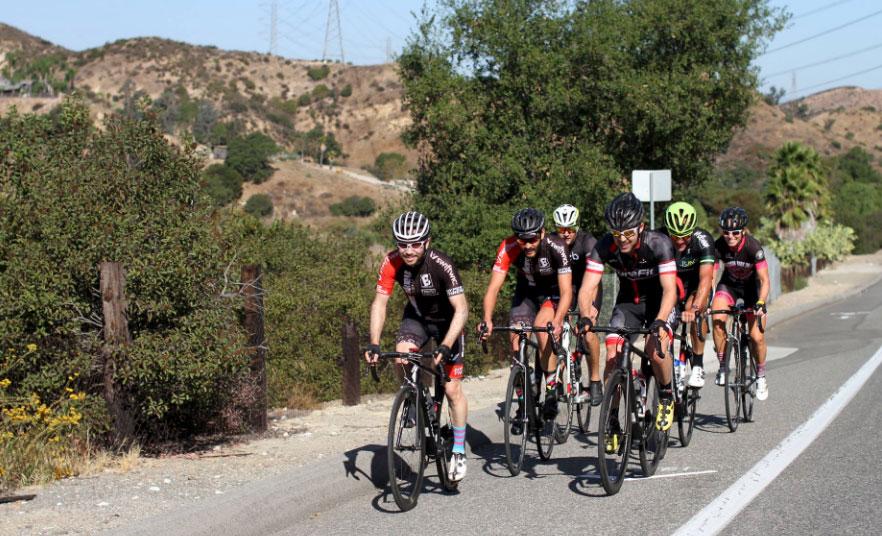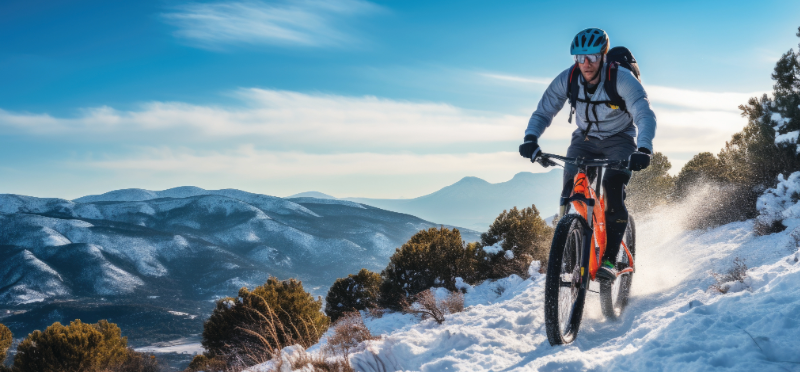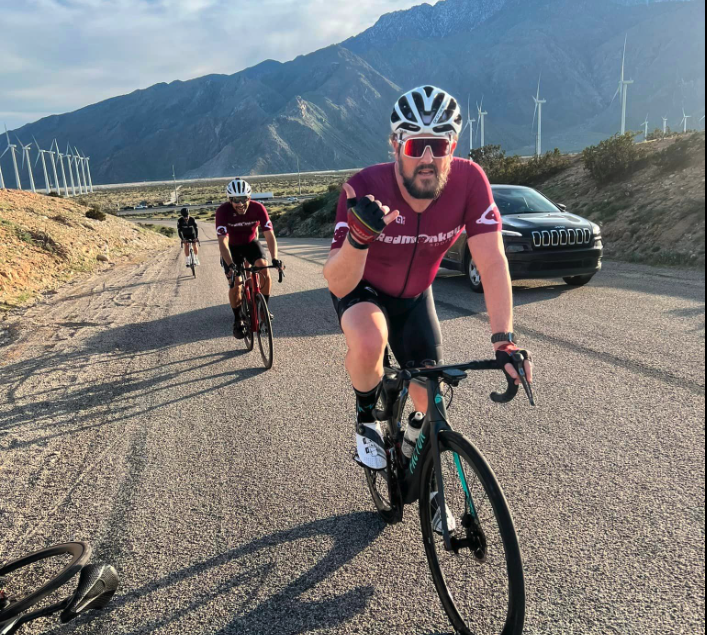Ahhhhh the paceline!
A paceline is the most efficient way for a group to move at speed through the wind and is achieved by having one line of fast riders 'pulling' through and another adjacent line of slow riders 'drifting' back to rejoin the faster line. This rotation effectively allows the slower group to rest while they drift back, regain composure, and rejoin the fast group to re-exert themselves. This results in consistent speed at a shared output. Think team time trial. The larger the numbers, the more evenly split the work is amongst the participants, however, the easier the paceline is to get disorganized, or for tired or less committed riders to hide and not share in the workload.
The BASIC steps to establish a paceline are as follows:
- The person who starts it will ramp up gradually and consistently to the required speed.
- A high quality pull on the front starts when the first person on the front ramps up to the designated speed, then moves off the front to the right in a controlled and predictable manner (direction is normally dependent on wind conditions, but is safer to go 'right' when using a bike lane).
- No swerving and no gaps: one only needs to move over enough to let the next person through. In other words, riders should leave the smallest, safest gap handlebar to handlebar. Large gaps are not aerodynamically efficient.
- As the rider transitions to the right, he/she shall reduce output to recover. Do not stop pedaling entirely or too much speed will be lost and rejoining the fast line will require a larger effort than necessary.
- The next person on the fast side comes through immediately and smoothly at the SAME effort the last person left off with.
- Maintaining consistent output is mandatory for efficiency. Surging results in unnecessary gaps making an inefficient paceline. This is a particularly telling sign of a less experienced rider and should be corrected immediately.
- For those with power meters, it is worth noting output AND speed to remain consistent. For those without power meters, speed may be your only metric for consistency.
- Riders should check speed before taking over the pace / expect a 20-30% rise in power output to maintain speed once the leading rider transitions off the front). Power and speed allow you to remain consistent over varying terrain.
- Speed alone will vary if the group starts climbing a hill. Since it is efficient to keep a larger group together as long as possible, it is worth it to reduce speed on any gentle rises by maintaining a consistent output. Anything steep will require the paceline to pause, as riders will climb at their own speeds. Generally, riding at less than 12 mph, without wind, means there will not really be an aerodynamic benefit to the paceline (a judgement will have to be made in a race situation if the riders are necessary to share the work, or if they should be allowed to drop off the group).
- The rider should maintain the output and speed for the designated time. If the rider is tiring and cannot take the entire pull, move off the front early before over-exerting and going anaerobic. Recovery from over-exertion is difficult and will likely not happen before the end of the fast line finds you and whips you out the back and off the group.
- If a rider is having difficulty maintaining the output and speed of the paceline. Remember, it is beneficial to have more people help with the work than less. It is acceptable for a rider to sit out a few rotations to recover and re-insert themselves into the paceline.
- The overworked rider should drift to the back of the paceline and stay in the draft of the fast line for recovery, as other riders drift back in the slow line, the recovering rider shall call out to them to alert them to his/her intention and allow room for the rotating rider to move into the fast line in front of the recovering rider.
- Rinse and repeat.
- Other considerations regarding safety. All standard group riding safety norms and etiquette apply. Especially, do not overlap wheels. If riders need to scrub speed, they should use the wind first, before using their brakes. Sit a little more upright to lessen the draft, or move slightly out of the draft to slow down. The riders on the front must call out any dangerous road conditions and any changes in direction.
- “Through and over” or “Rotating paceline” means that the line is constantly rotating and the fast rider at the front is never in the wind for more than it takes for the prior person to let them into the slow line. This is more advanced since everyone is always moving either forward or backward, and rotating in or out. This is perfect for chasing down a breakaway aggressively since each rider can have a higher output on the front, if only for a few seconds.
- Wind direction will often determine rotation when auto traffic is not an issue. The slow line should shelter the faster line from the wind.
- As the group may slow for a hill, conversely, the fast line must be aggressive on a descent. Keep in mind that everyone behind is practically coasting on a descent resulting in bunching, and the potential for crashes. It is imperative that the pace remains high on the descent too.
- Communication can be very useful for a newly formed paceline to get in the groove. It all starts with a leader calling out the desired speed and initiating the paceline. Riders who have just transitioned from fast line to slow line can call “Clear!” when it is ok for the rider in the fast line to move over. In a rotating paceline, this should be done as soon as there is room to move safely. Riders in the back, who have just transitioned from the slow line to fast line, can call out “Last Rider!” to the next rider falling back in the slow line to alert them that they will need to transition soon.


Those are the basics. With a little practice and training it is easy to save 30% energy over the peloton versus riding alone in the wind!







